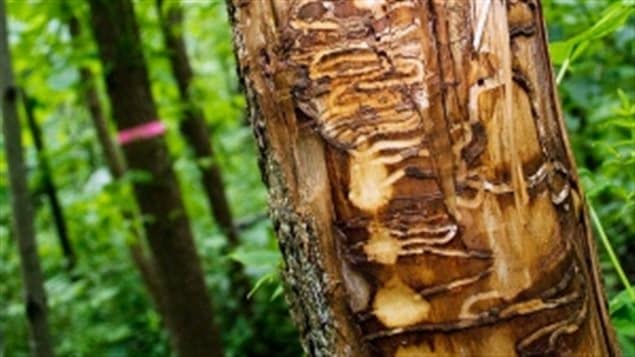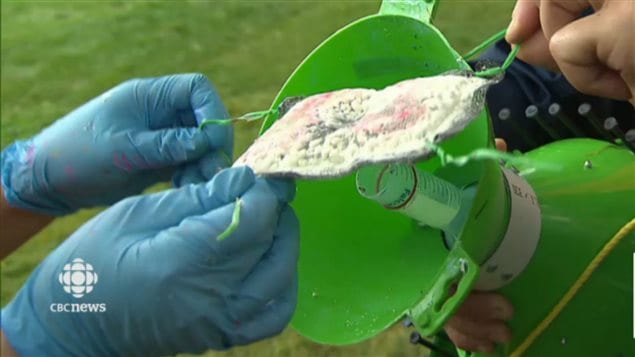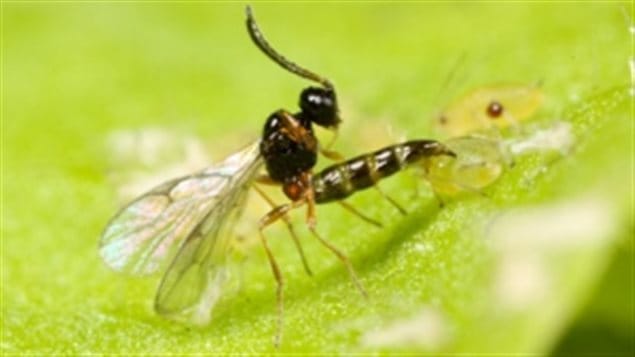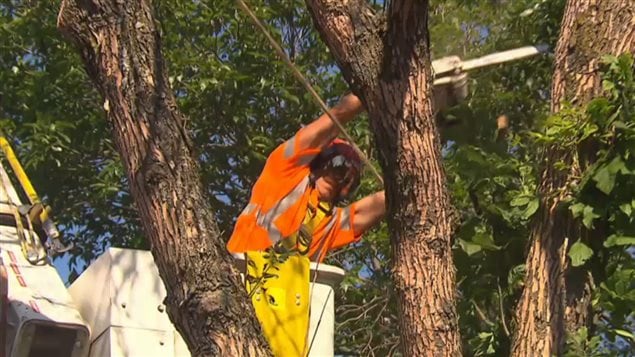The fight is on, but the alien invader has the big advantage.
Montreal will lose another 3,000 of its lush ash trees this year, victims of an alien invader from Asia.
The emerald ash borer (eab) is a brilliant green beetle about 2cm long. It burrows into ash trees where its larvae chew the critical layer under the bark which provides nutrient to the tree which results in the tree dying.

The invasive species was discovered in Michigan in 2002, it has quickly spread to several other US states, and across southern Ontario and into Quebec, killing millions of the majestic ash trees along the way.

Speaking to a CBC reporter, Robert Lavallée, an entomologist and research scientist with Natural Resources Canada said, “Right now, we have no way to control the emerald ash borer. It’s living freely with no predators and no disease,”
The city of Montreal is trying to introduce a disease and has embarked on an experimental programme of natural defence against the beetle. Lavalée and his research team have set up some 200 traps in ash trees around the city.

The traps lure the bug, which falls to the bottom where it encounters a pad coated with fungus. The beetle then transmits the fungus to its partner during mating and the fungus eventually kills them.

The city is also spraying the trees and injecting them with an experimental “vaccine” which reduces the beetle’s ability to reproduce and has to be repeated every two years. Montreal is also experimenting with a natural predator, non-stinging parasitic Chinese wasps.

Northern Ontario- EAB awareness campaign
Officials admit they are still very much on the defensive in this battle and that the ash borer is winning. They also say they don’t know how well any of these strategies may work and it may take a couple of years to find out, They also acknowledge that the ash borer will still likely kill thousands of trees in the city, and millions elsewhere, before the tide turns against the invasive bug.







For reasons beyond our control, and for an undetermined period of time, our comment section is now closed. However, our social networks remain open to your contributions.